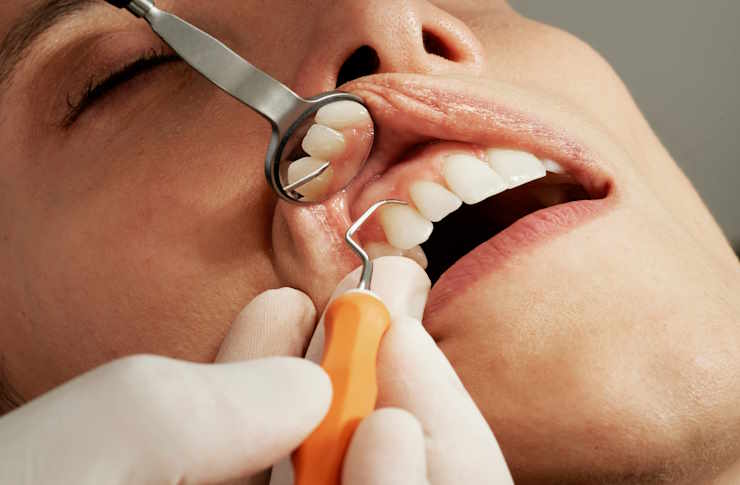Screwless Dental Implants Cost and Benefits in United States 2025
Did you know screwless dental implants eliminate visible screw holes for a natural look and improved comfort? Discover how they differ from traditional implants, their pros and cons, typical costs, and who might be the best candidate in the United States in 2025.

What Are Screwless Dental Implants?
Screwless dental implants are a type of dental restoration where the artificial tooth is attached without a visible screw. Unlike traditional screw-retained implants, which utilize a tiny screw to fix the crown or prosthesis to the implant abutment, screwless implants rely on dental cement or friction-fit mechanisms to hold the prosthetic teeth in place.
The implant itself—usually composed of titanium or zirconia—is surgically inserted into the jawbone, serving as a tooth root replacement. The main distinction is how the crown or restoration is affixed:
- Screwless implants: The crown is bonded to the abutment using dental cement or attached via precision friction fitting.
- Screw-retained implants: The crown is fastened with a small screw passing through the crown, leaving a visible screw-access hole on the surface.
Benefits of Screwless Dental Implants
The primary benefit of screwless dental implants lies in aesthetics. Since no screw holes are present, the final restoration appears as a natural, uninterrupted tooth. This is particularly significant for implants in highly visible locations such as front teeth.
Other possible advantages include:
- Enhanced cosmetic outcome without screw access holes affecting appearance.
- Suitability for limited space or difficult implant angles where screw-retained solutions may not be viable.
- Some reports from clinics outside the U.S. suggest potentially less invasive procedures, possibly influencing recovery times.
Considerations and Limitations
Despite their aesthetic appeal, screwless dental implants have several important drawbacks:
- Cement use can lead to issues if excess cement is not fully removed. Residual cement may cause inflammation around the implant (peri-implantitis), jeopardizing long-term success.
- Maintenance and removal of the crown can be more complicated with cemented implants, sometimes necessitating more invasive procedures for repairs or replacements.
- In the United States, screwless implants are less frequently used than screw-retained ones due to these risks and the preference for easier maintenance.
Dental professionals generally recommend screwless implants primarily when aesthetics are especially important or when anatomical conditions restrict screw-retained options.
Prevalence of Screwless Dental Implants in the United States
In the U.S., screw-retained implants continue to be favored by most dentists as they tend to allow simpler maintenance and reduce risks related to leftover cement. Screwless implants are more prevalent in some international markets, including popular destinations for dental tourism such as Turkey, where treatment approaches may differ.
Patients interested in screwless implants, particularly via dental tourism, should consult qualified U.S. dental providers to confirm that implant materials and procedures comply with U.S. quality standards and suit their oral health needs.
Cost of Screwless Dental Implants in the United States in 2025
The cost for dental implants generally covers:
- The implant fixture (metal post surgically placed in the jaw)
- The abutment (connector piece)
- The dental crown or final prosthesis
General Cost Range for Single Dental Implants in 2025
In 2025, the average cost of a single tooth dental implant in the United States ranges from approximately $3,000 to $5,000. This usually includes:
- Implant placement surgery
- Abutment connection
- Custom-fabricated crown
Additional treatments such as bone grafts, tooth extractions, or consultations may raise the total cost.
Cost Information Specific to Screwless Implants
Screwless implants sometimes have lower prices in dental tourism markets, U.S. prices generally fall within the usual implant cost range due to regulatory oversight and clinical preferences favoring screw-retained designs.
Patients should factor in potential maintenance or complication management costs when budgeting for screwless implant treatment.
Suitability for Screwless Dental Implants
Suitable candidates for screwless dental implants may include:
- Individuals with healthy gums and adequate bone density for implant placement.
- Patients desiring improved esthetic results, especially in front teeth.
- Those facing anatomical challenges, such as limited space or difficult implant angles, where screw-retained implants are less practical.
Candidates should be aware of cement-related inflammation risks and maintain excellent oral hygiene to support implant health.
People with systemic health conditions (e.g., uncontrolled diabetes) or habits such as heavy smoking may have a higher risk of implant failure regardless of implant type, and should discuss these risks with their dental care providers.
Summary
Screwless dental implants provide aesthetic benefits by eliminating visible screw holes, appealing to patients seeking natural-looking restorations. They may be particularly useful for front teeth or cases requiring specific implant positioning.
However, screw-retained implants remain more common in the United States because they offer easier maintenance and have fewer associated risks.
Cost estimates for screwless implants generally align with standard implant prices—about $3,000 to $5,000 per tooth in 2025—though individual fees vary depending on case details.
Patients are encouraged to consult experienced, licensed U.S. dental professionals to review benefits, risks, suitability, and financial aspects related to their specific conditions.
Sources
- Saigon Implant - What Are Dental Implants?
- Maida Smiles - The Truth About Screwless Dental Implants
- Advanced Smile Dental - Single Tooth Implant Cost Without Insurance
Disclaimer: All content, including text, graphics, images and information, contained on or available through this web site is for general information purposes only. The information and materials contained in these pages and the terms, conditions and descriptions that appear, are subject to change without notice.




